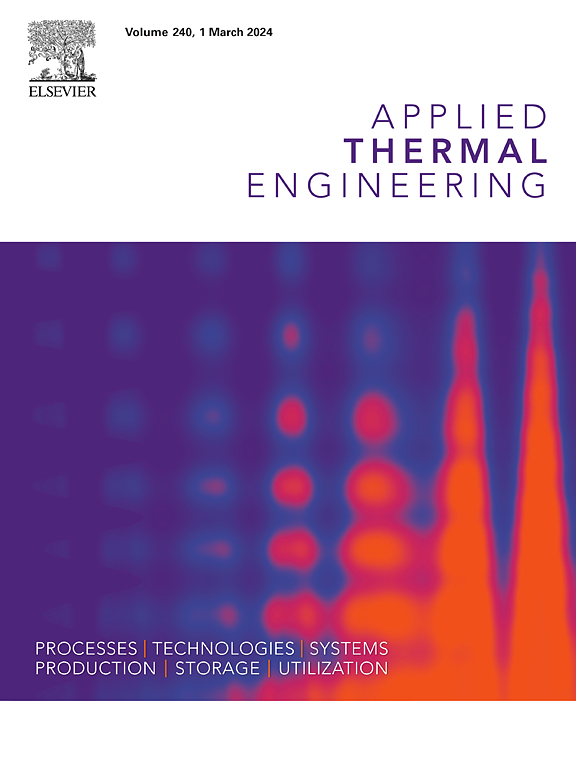采用异质集成微热电冷却器的片上热点热延迟和峰值裁剪
IF 6.9
2区 工程技术
Q2 ENERGY & FUELS
引用次数: 0
摘要
由于微型热电冷却器能够提供本地化、按需冷却,因此已成为片上动态热管理的一种有前途的解决方案。然而,它们的实际实施面临着几个挑战,包括封装集成、寄生热阻和适当的脉冲电流控制。在这项工作中,我们使用集成在倒装球栅阵列封装内的热测试车辆中的微热电冷却器来表征片上动态热管理的性能。我们提出了两种动态热管理策略来研究热点温度的时间延迟和削峰性能。实验结果表明,同时激活micro-TEC和芯片可以显著提高动态热管理性能。在不同的热点热通量(150、200和250 W/cm2)下,瞬态珀尔帖冷却可立即使热点温度比环境温度降低10°C。在热点热流密度为250 W/cm2时,微热电冷却器功耗仅为芯片功耗的20%,延时8.24 s,脉冲后温度降低20.64℃。峰值削波策略消耗80%的芯片功耗,峰值温度降低21.48°C,脉冲后温度降低20.79°C。本文章由计算机程序翻译,如有差异,请以英文原文为准。

On-chip hotspot thermal delay and peak clipping using a heterogeneously integrated micro-thermoelectric cooler
Micro-thermoelectric coolers have emerged as a promising solution for on-chip dynamic thermal management due to their ability to provide localized, on-demand cooling. However, their practical implementation faces several challenges, including packaging integration, parasitic thermal resistance, and proper pulse current control. In this work, we characterize the performance of on-chip dynamic thermal management using a micro-thermoelectric cooler integrated into a thermal test vehicle within a flip-chip ball grid array package. We propose two dynamic thermal management strategies to investigate the time delay and peak clipping performance of hotspot temperature. Experimental results demonstrate that simultaneously activating the micro-TEC and the chip significantly enhances the performance of dynamic thermal management. Transient Peltier cooling immediately reduces the hotspot temperature by 10 °C below the ambient temperature under varying hotspot heat fluxes (150, 200, and 250 W/cm2). At a hotspot heat flux of 250 W/cm2, the micro-thermoelectric cooler consumes only 20 % of the chip power consumption while achieving an 8.24 s time delay and a 20.64 °C post-pulse temperature reduction using the time delay strategy. The peak clipping strategy consumes 80 % of the chip power consumption, resulting in a peak temperature reduction of 21.48 °C and a post-pulse temperature reduction of 20.79 °C.
求助全文
通过发布文献求助,成功后即可免费获取论文全文。
去求助
来源期刊

Applied Thermal Engineering
工程技术-工程:机械
CiteScore
11.30
自引率
15.60%
发文量
1474
审稿时长
57 days
期刊介绍:
Applied Thermal Engineering disseminates novel research related to the design, development and demonstration of components, devices, equipment, technologies and systems involving thermal processes for the production, storage, utilization and conservation of energy, with a focus on engineering application.
The journal publishes high-quality and high-impact Original Research Articles, Review Articles, Short Communications and Letters to the Editor on cutting-edge innovations in research, and recent advances or issues of interest to the thermal engineering community.
 求助内容:
求助内容: 应助结果提醒方式:
应助结果提醒方式:


